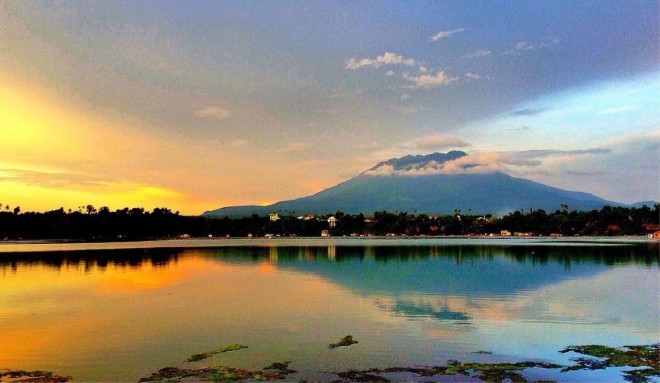Rediscovering San Pablo City at 75
San Pablo in Laguna province is the country’s only city endowed with seven natural lakes, five rivers, eight creeks and a majestic mystical mountain.
It is celebrating its cityhood today, 75 years after it was granted the status on May 7, 1940, rising from the ruins of a raging fire that decimated a once established affluent town in 1938 and before the Japanese Imperial Army set foot in the Philippines in 1942.
San Pablo struggled for survival amid the grueling punishment the country—a colony then of the United States—suffered under the Japanese forces. Homes, buildings, infrastructure and farmlands were destroyed.
Three years after the Japanese were driven away on April 3, 1945, Franklin Baker Co., the largest manufacturer and exporter of coconut products in Southeast Asia, rebuilt its San Pablo processing plant in 1947. The Southern Tagalog region and the city’s agriculture economy primarily driven by coconuts produced in backyards and plantations, supplied the raw material and labor of Franklin Baker, San Pablo Manufacturing Corp. and Pilipinas Ecofiber Corp.
The resurgence of world economies and the major shifts and changes in world trade in the last quarter of the 20th and early 21st centuries affected the profitability of coconut production.
Article continues after this advertisementThe San Pableños’ ingenuity and creativity found ways to make the most out of the tree of life. All possible consumer-based products—coconut wine, coco-based soap and beauty-enhancing products, coco vinegar, virgin coconut oil, coco juice, “buko” (young coconut) pie, novelty products and many more—kept the industry alive.
Article continues after this advertisementEnterprising residents found lucrative business in jeepney manufacturing, taking advantage of the supply of cheap surplus engines from Japan. For more than a decade, San Pablo earned the monicker “Jeepney Capital of the Philippines” due to the volume of units produced by 30 manufacturers.
In 1992, during the term of Mayor Vicente Amante, concreting of the city’s 231-kilometer road network was completed. Farmers and agricultural workers benefited the most as it made easier for them the transport of their products from the farms to the market.
Construction of the City Public Market (San Pablo Shopping Mall) was completed in 1994.
Also from 1993 to 2006, 14 public high schools were strategically built in selected barangays. To address the need for higher education among low-income families, Dalubhasaan ng Lungsod ng San Pablo, was established in October 1997. In 2006, San Pablo Science High School was opened to poor students.
The San Pablo City General Hospital was put up in April 2010.
To spur investments, the First One Stop Processing Center in Asia was established. It houses all government offices concerned with the processing and issuance of business permits and licenses. Nearby, the City Governance Building was erected in 2001 and made fully functional in 2004.
Following strong income-generating signals in tourism development from the international community and the national government, San Pablo City held its first Coconut Festival (Cocofest) on Jan. 12, 1996, promoting the art, rich culture and coconut products the city has been well known for.
Street dancing highlights the yearly celebration with dancers dressed in colorful costumes laced with coconut-based ornaments. The Department of Tourism chose the Coconut Festival as Best Tourism Event for three consecutive years (2010 to 2012), earning the Hall of Famer title for the category.
The tourism culture fever prompted the Cultural Society of San Pablo, a private organization, to establish the San Pablo City Museum in cooperation with the city government. With the assistance of Fundacion Santiago, the “Museo” was formally opened to the public in July 2011. Local and foreign tourists who have visited the museum were awed by the richness of the city’s culture and history as evidenced by heirlooms, artifacts, documents and pictures.
Historical landmarks were restored along with moves to develop the ecotourism potential of the Seven Lakes—Sampalok, Pandin, Mohicap, Yambo, Palakpakin, Calibato and Bunot—and other equally promising natural resources. In 2012, the local government bagged the Best Tourism Oriented Local Government Unit award.
Under Mayor Loreto S. Amante, the Tourism Master Development Plan (TMDP) was recently approved after careful planning and consultations with the private sector and stakeholders, and with the active participation of the City History, Arts, Culture and Tourism Council, and the City History, Arts, Culture and Tourism Office. The TMDP details the total ecotourism development of the nature-blessed city with the seven lakes at the forefront.
Amante envisions San Pablo as a progressive hub of economic activity and growth through sustainable tourism development and information technology, with emphasis on total human development.
